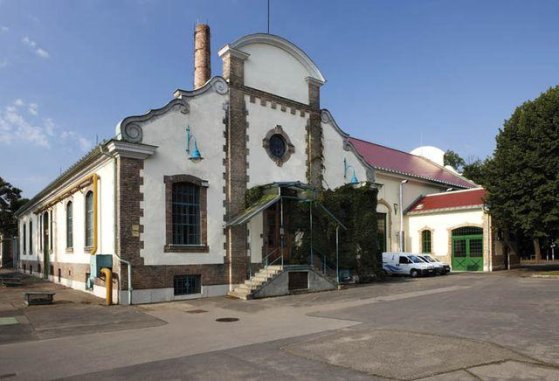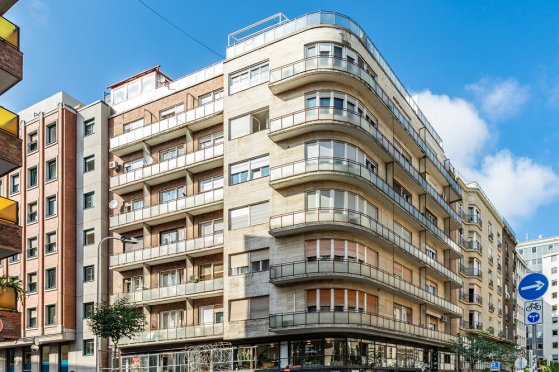 The „intertwined history” of the bridges and the city of Budapest
Which ideas and events have shaped the fate of bridges of Budapest and the cityscape? Alongside many other interesting facts, this question is also answered this newly published book by the Budapest City Archives, which introduces the history of bridges in Budapest.
The „intertwined history” of the bridges and the city of Budapest
Which ideas and events have shaped the fate of bridges of Budapest and the cityscape? Alongside many other interesting facts, this question is also answered this newly published book by the Budapest City Archives, which introduces the history of bridges in Budapest.
Veronika F. Nagy
 Renowned photographers of the era captured the National Millennium Exhibition in the City Park 125 years ago
Renowned photographers of the era captured the National Millennium Exhibition in the City Park 125 years ago
July 14, 2021 at 9:30 AM
The National Millennium Exhibition in City Park, opened in 1896, is a unique event to this day. The capital has not hosted such a large-scale exhibition since then, which also presents the history, economy, industry, and ethnography of the nation. Thanks to the photographs taken by the famous photographers of the period, György Klösz and Antal Weinwurm, people can still marvel at the beautiful pavilions built for this event, the ethnographic village, the restaurants and the festive atmosphere.
Joyous I do's – 125 years of civil marriage in Budapest
October 16, 2020 at 1:00 PM
Laws on state registries and civil marriage were passed in 1894 but only entered into force a year later on 1 October 1895. The novelty of the now everyday ceremony caused such a rush that the three registrars in Budapest at the turn of the century could barely cope with the number of marriage requests. Where and how did the first civil marriage in Hungary unfold?
A Second Hall to Thalia – 145th anniversary of the former Népszínház opening
October 14, 2020 at 10:00 AM
An independent theatre for folk plays that is the Popular Theatre or People's Theatre, Népszínház was opened as a home for the genre which had become popular during the Hungarian National Awakening. The building was completed as a result of an increasingly concerted effort and support from the city. Standing on the present-day Blaha Lujza Square, the structure was designed by the Austrian architects Fellner and Helmer, who were well-known for their theatres. The beautiful building in the eclectic-style was opened with much circumstance on 15 October 1875. The building housed the National Theatre from 1908 and was torn down in the spring of 1965.
Water meters were installed 100 years ago to reduce water waste
August 25, 2020 at 1:00 PM
It is hard to imagine today that drinking water from the tap was not always a basic service. Mihály Kajlinger, born 160 years ago, has indisputable merit in the organisation and construction of Budapest's water supply. His name is associated with the plans for the capital's large sewage pumping station, sewerage, and water supply network, but water consumption meters were also introduced at his suggestion to curb water waste. His main work, the waterworks of Káposztásmegyer, was the most beautiful and modern waterworks in contemporary Europe.
Born 125 years ago the architect Gedeon Gerlóczy is remembered as a saviour of Csontváry’s paintings
July 7, 2020 at 3:00 PM
Gedeon Gerlóczy was a leading figure of modern architecture in Hungary. Several of his buildings became landmarks in Budapest as it changed between the two world wars. As the designer of new hospitals, he became a pioneer for a modernist interpretation of these functional buildings. And as the saviour of several of Tivadar Csontváry Kosztka’s paintings, he is remembered as the “painting saving architect.”
More articles
 The „intertwined history” of the bridges and the city of Budapest
Which ideas and events have shaped the fate of bridges of Budapest and the cityscape? Alongside many other interesting facts, this question is also answered this newly published book by the Budapest City Archives, which introduces the history of bridges in Budapest.
The „intertwined history” of the bridges and the city of Budapest
Which ideas and events have shaped the fate of bridges of Budapest and the cityscape? Alongside many other interesting facts, this question is also answered this newly published book by the Budapest City Archives, which introduces the history of bridges in Budapest.
 The Bridge Report, which brought a turning point in the history of Budapest
A travel report that changed the history of Pest and Buda, as well as Hungary. The little book contributed to the change of half a thousand years of legal customs and the implementation of an investment of unprecedented size and technical quality. This book was The Bridge Report [Hídjelentés in Hungarian].
The Bridge Report, which brought a turning point in the history of Budapest
A travel report that changed the history of Pest and Buda, as well as Hungary. The little book contributed to the change of half a thousand years of legal customs and the implementation of an investment of unprecedented size and technical quality. This book was The Bridge Report [Hídjelentés in Hungarian].
 Drama on the university wall - The heroic monument was planned 95 years ago
In the constant hustle and bustle of the Egyetem Square in Pest, the students may not even notice the monument that decorates the short section of wall between the church and the central building of ELTE. However, it commemorates their predecessors, the heroes who fought for their country in World War I, and those who heroically helped them. The first design of the dramatically collapsing soldier was born in 1928, ninety-five years ago.
Drama on the university wall - The heroic monument was planned 95 years ago
In the constant hustle and bustle of the Egyetem Square in Pest, the students may not even notice the monument that decorates the short section of wall between the church and the central building of ELTE. However, it commemorates their predecessors, the heroes who fought for their country in World War I, and those who heroically helped them. The first design of the dramatically collapsing soldier was born in 1928, ninety-five years ago.




